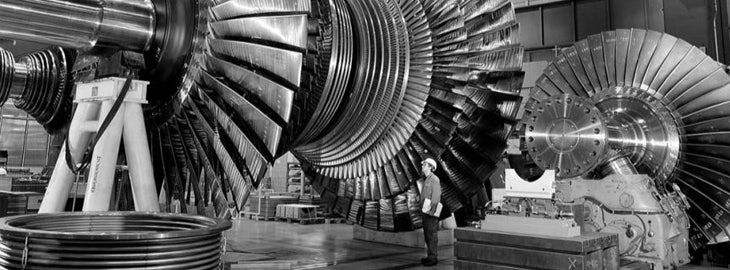In recent years, the application of condition monitoring and predictive maintenance has been growing significantly, due to increasing demands for machine availability and overall efficiency. Technological developments like big data, smart algorithms, cloud and wireless find their way to the market, boost the possibilities for automated analysis and create opportunities to reshape the process of monitoring and analysing.
The industrial cloud
Condition-based maintenance (CBM), or predictive maintenance, is central to cloud-based systems. These systems offer data analysis and interpretation based on models/algorithms that are defined for specific machinery and processes. Deviations detected by the system, will lead to maintenance recommendations. Such systems allow companies to move from reactive maintenance to proactive maintenance. Maintenance can be carried out before actual failures occur.
Predictive maintenance
It is important to understand that predictive maintenance or CBM are not dependent on cloud-based systems. Many companies offering these solutions market predictive maintenance as a new concept. This is not the case; existing condition (vibration) monitoring systems have been on the industrial market for decades. Predictive maintenance strategies have been applicable since the use of (on-line) conditions monitoring systems. The data that these systems provide are available for monitoring vibration behaviour, building vibration trends, and can be used for predictive maintenance. Moreover, systems that support automated analysis are not necessarily cloud-based.
Why use automated analysis?
Companies struggle with a strongly decreasing degree of expertise. This is largely a result of retiring experts and the scarcity of young experts or people with relevant training. This lack of expertise can be solved by implementing a system that enables automated analysis, where expertise is basically transferred into a system. This system uses models/algorithms to analyse and interpret vibration data, resulting in certain maintenance recommendations.
By automating vibration analysis and interpretations on rotating machinery, less local engineers are needed to carry out this work. For companies that struggle with a decreasing number of competent vibration experts, switching towards an automated system may be inevitable.
Expertise on demand
In our view, the main opportunity of these developments is to improve efficiency and effectiveness of condition monitoring. Using automated data processing to provide a first-line analysis, without the need for local expertise, can be a game changer. Wireless sensors and connected monitoring systems can reduce the infrastructural impact and initial investments for monitoring systems. Shared data can improve the algorithms for automated analysis and offers opportunities for remote support. These technologies increase the overall effectiveness and value of condition monitoring systems and structures, and change service models to expertise on demand.
Considerations
Despite the opportunities with these new technologies, the right considerations have to be made.
“As analysis and decision making are transferred to automated systems and remote experts, local engineers will become less involved with the machinery.”
1. Validation of data
The input is key for any automated or remote analysis, as they solely rely on the information provided by these inputs. Therefore the data input must be validated, including:
- Selecting the right sensor for the application
- Sensor calibration
- Signal to noise ratio
In addition, the accuracy of the data must be verified. The presented data needs to be relevant and accurate to get to a working predictive maintenance structure. Low accuracy data cannot be used for monitoring. In light of data accuracy, it is very hard to handle (exceptional) environmental influences, like changes in the environment, exceptional process conditions or human error. E.g. vibration caused by another machine (cross vibration), could trigger the automated system to generate a false alarm.
2. Logistics and maintenance
To collect relevant data, the measurement and data stream must be guaranteed. Proper maintenance and logistics must be in place and include:
- Preventing cross-wiring of sensors
- Preventing false placement/location of sensors
- Relevant data collection interval
- Availability of spare sensors
- Sensor battery management and replacement strategy
- Stable, secure and reliable network connections
3. Local expertise
As analysis and decision making are transferred to automated systems and remote experts, local engineers will become less involved with the machinery. As a result, a growing dependency on external experts for analysis and support arises.
4. Security and privacy
By connecting sensors and monitoring hardware to the internet, cyber security becomes a risk and new guidelines regarding storage and handling of data, like ISO 27001, become applicable. The vulnerabilities and regulations increase the complexity of the implementation of a connected system.


